Endocrine System
Table of Contents
What is the Endocrine System?
The endocrine system is a network of all glands of the body & organs situated throughout the body. It’s the same as the nervous system in that it plays a major role in controlling & regulating so all the functions of the body.
Endocrine systems are made up of:
- Glands are located throughout the body;
- Hormones that are made by the glands & released in the bloodstream or the fluid surrounding cells;
- Receptors in various organs & tissues recognize and respond to the hormones.
However, while the human nervous system uses nerve impulses & neurotransmitters for communication, the human endocrine system uses chemical messengers called hormones.
Functions
It is responsible for regulating a range of bodily functions by the release of hormones & secreted by the glands and then travels via the blood to various organs & tissues in the body. The hormones then tell these organs & tissues what to do or how to function. Some examples of bodily functions that are regulated by the endocrine system include:
- metabolism
- growth and development
- sexual function and reproduction
- heart rate
- blood pressure
- appetite
- sleeping and waking cycles
- body temperature
Why are hormones important?
They act as chemical messengers. They are released into the bloodstream to act on an organ in another part of the body. Although hormones reach all body regions & only target cells with compatible receptors are equipped for a response. Hormones regulate many biological processes & are often produced in low amounts within the body. Examples of such processes include:
- blood sugar control (insulin);
- differentiation, growth, & function of reproductive organs (testosterone & estradiol);
- body growth & energy production (growth hormone & thyroid hormone).
Hypothalamus
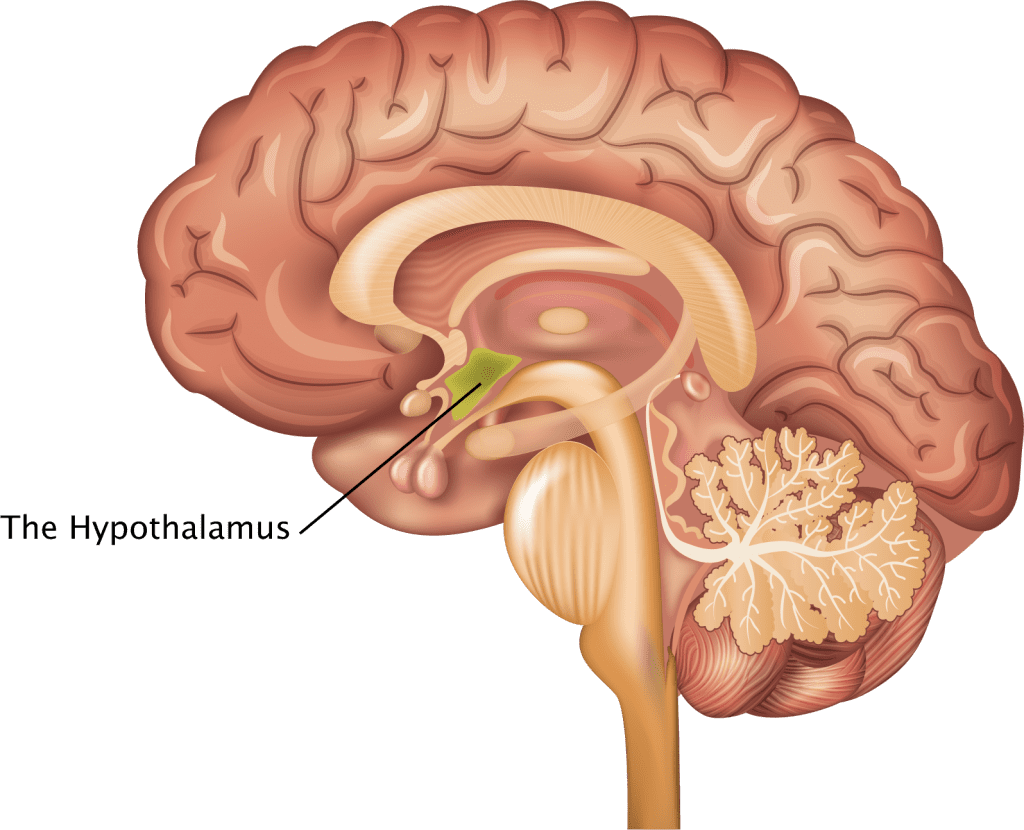
It produces hormones that control the pituitary gland. It’s also regulating many functions, including sleep-wake cycles, body temperature, & appetite. It can also regulate the many functions of other endocrine glands.
It is a structure deep within the human brain. the hypothalamus gland is the link between the endocrine system & the nervous system.
What are the functions of the hypothalamus?
It receives chemical messages from nerve cells in the brain & from nerve cells in the body (the peripheral nervous system), which is also responding to signals from outside the body.
The hypothalamus’s main function is to react to these messages to keep the body in a stable state or internal balance. Just like you may have a “smart control” system to manage all functions in your home seamlessly, it’s your body’s “smart control” coordinating center.
It helps in managing your:
- Body temperature.
- Blood pressure.
- Hunger and thirst.
- Sense of fullness when eating.
- Mood.
- Sex drive.
- Sleep.
The hypothalamus performs many of its “body balancing” jobs either by directly influencing the autonomic nervous system(ANS) or by managing hormones. The autonomic nervous system (bodily functions that work automatically) controls several vital functions such as the heart rate & breathing (respiration).
Hormones are the “chemical messengers” that travel through the bloodstream to another part of the body that communicates either with another endocrine gland (which releases other hormones) or with a specific organ.
Your hypothalamus:
Makes some hormones itself that are stored in the posterior pituitary.Sends signals to the pituitary gland, which either releases hormones that directly affect a part of the body or sends another signal to a different gland in the body that then secretes its hormone.
How does this gland interact with the pituitary gland?
The pituitary gland lies just below the hypothalamus. It consists of two lobes, known as the anterior pituitary & posterior pituitary. The hypothalamus is connected to & communicates with the anterior lobe through a network of blood vessels. It communicates with the posterior lobe by tissue known as the pituitary stalk.
The hypothalamus creates signals by releasing hormones to inform the anterior & posterior pituitary when to release its hormones.
Anterior pituitary
| Hypothalamus- releasing hormone | A hormone released by the anterior pituitary in response | Effect of the hormone on the body |
| Growth hormone-releasing hormone (GHRH) | Growth hormone (GH) | Goes directly to the long bones & the big muscles to stimulate growth in the body. |
| Gonadotropin-releasing hormone (GnRH) | Follicle-stimulating hormone (FSH) & luteinizing hormone(LH) | It travels to gonads. In males, LH causes the testes to form testosterone; FSH controls sperm production. In females, LH & FSH control the menstrual cycle & trigger the release of an egg from the ovary (ovulation). |
| Corticotropin-releasing hormone (CRH) | Adrenocorticotropic hormone (ACTH) | it travels to the adrenal glands. Causes the adrenal glands to release the stress hormone cortisol & regulate metabolism and immune response. |
| Thyrotropin-releasing hormone (TRH) | Thyroid-stimulating hormone (TSH) | Travels to the thyroid glands. Causes the thyroid to release thyroxine (T4) & triiodothyronine (T3). |
| Dopamine (inhibition) | Prolactin(PRL) | Goes directly to breast tissue for the production of breast milk. |
Posterior pituitary
The hypothalamus makes two hormones but stores them in the posterior pituitary gland. When these hormones are needed, the hypothalamus sends a signal to the posterior pituitary gland to secrete them into the bloodstream. These two hormones are known as oxytocin & Vasopressin.
Oxytocin: oxytocin assists in the birthing process (stimulates uterine muscle contraction) & in lactation (release of breast milk). It’s also thought to play a role in human bonding, sexual arousal, trust, recognition, sleep cycle & feelings of well-being.
Vasopressin: vasopressin also called antidiuretic hormone (ADH). it regulates the control of the body’s water/urine volume & blood pressure.
Dopamine. It is the “feel-good” hormone. It gives a sense of pleasure to the body. dopamine gives the motivation to do something when you are feeling pleasure. It signals the pituitary to stop releasing prolactin.
Somatostatin. It prevents the secretion of several other hormones. its including growth hormone(GH), thyroid-stimulating hormone(TSH), cholecystokinin & insulin. all of these hormones regulate the production of somatostatin.
The hypothalamus also regulates any imbalances in body temperature, stress & daily bodily rhythms.
Anatomy
The hypothalamus is about the size of an almond that lies below the thalamus & above the pituitary gland. It sits directly above the brainstem at the base of the brain.
What happens if the hypothalamus is damaged?
When the hypothalamus gland is damaged, it doesn’t function as it should. main Causes of hypothalamic dysfunction include:
- Head injuries, such as traumatic brain injury.
- Brain infection.
- Brain tumors in or around the hypothalamus or brain aneurysms.
- Significant weight loss is caused by eating disorders, such as anorexia.
- Brain surgery.
- Radiation therapy & chemotherapy.
- Birth defects involving the brain or hypothalamus.
- Inflammatory disease including multiple sclerosis(MS) & neurosarcoidosis.
Hypothalamus dysfunction plays a role in:
Hypothalamic-pituitary disorders: Because of the close interactions between the hypothalamus & pituitary gland, conditions that affect either is known as hypothalamic-pituitary disorders. Certain hormone tests can help in determining the exact hormone involved to make a more specific diagnosis.
Hypopituitarism: hypopituitarism can be caused by damage to your hypothalamus.
Diabetes insipidus: This condition happens when your hypothalamus doesn’t produce & release enough vasopressin. This causes the kidneys to lose too much water & results in excessive peeing and thirst.
Prader-Willi syndrome is an inherited condition that causes the hypothalamus not to recognize the sensation that you’re full when you’re eating.
Kallmann syndrome: This syndrome has a genetic link to hypothalamic disorder, causing such hypothalamic problems in children as delayed or no puberty.
Syndrome of inappropriate antidiuretic hormone: This syndrome occurs when the antidiuretic hormone level is too high. it Causes include stroke, hemorrhage, infection, trauma, cancer & certain medications.
Central hypothyroidism: This is a rare disorder that occurs due to both hypothalamic & pituitary disorders. The most common cause is a tumor in the pituitary gland such as a pituitary adenoma.
Hyperprolactinemia: This condition is caused by a decrease in dopamine levels causing an increase in prolactin levels. Causes include a tumor, damage to neuron cells in the hypothalamus & other causes.
Symptoms of hypothalamus dysfunction depend on the types of hormones involved & also depend upon whether the hormone level is too low or too high. Some symptoms of a hypothalamus gland problem may include:
- High blood pressure or low blood pressure.
- Water retention or dehydration.
- increase or decrease weight with or without changes in appetite.
- Infertility.
- Poor bone health.
- Delayed puberty.
- Muscle loss and weakness.
- Body temperature fluctuations.
- Trouble sleeping (insomnia).
- Frequent need to pee.
Pituitary Gland
What is the pituitary gland?
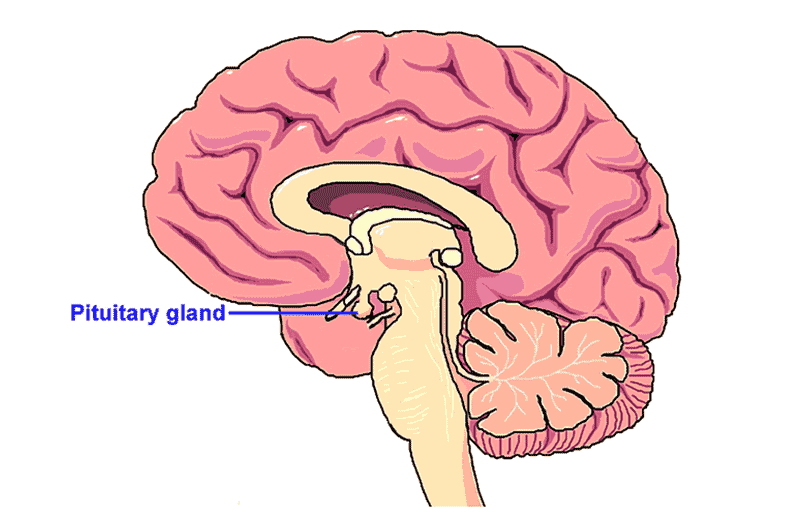
The pituitary gland (also known as hypophysis) is a small, pea-sized gland situated at the base of the brain below the hypothalamus. It sits in its own little chamber under the brain called the sella turcica. It’s part of the endocrine system & is in charge of making several essential hormones.
The pituitary gland is classified into two main sections: the anterior pituitary (front lobe) & the posterior pituitary (back lobe). this gland is connected to the hypothalamus through blood vessels and nerves called the pituitary stalk (also called infundibulum).
Which hormones does the pituitary make?
The anterior lobe of the pituitary gland makes & releases the following hormones:
Adrenocorticotropic hormone (ACTH or corticotrophin): It plays a role in how the body responds to stress. It stimulates the adrenal glands to produce cortisol (the “stress hormone”), which has many functions, including regulating metabolism, maintaining blood pressure, regulating blood glucose (blood sugar) levels & reducing inflammation.
Follicle-stimulating hormone (FSH): It stimulates sperm production in people assigned to males at birth and also stimulates the ovaries to produce estrogen & plays a role in egg development in people assigned to females at birth. This is called a gonadotrophic hormone.
Growth hormone (GH):, Growth hormone stimulates growth in children. In adults, growth hormone helps maintain healthy muscles & bones and impacts fat distribution in the body. Growth hormone also impacts metabolism (how your body turns the food you eat into energy).
Luteinizing hormone (LH): It stimulates ovulation in people assigned female at birth & testosterone production in people assigned male at birth. LH is also called a gonadotrophic hormone because of the role it plays in regulating the function of the ovaries & testes, called the gonads.
Prolactin: This hormone stimulates breast milk production (lactation) after giving birth. It can affect fertility & sexual functions in adults.
Thyroid-stimulating hormone (TSH): This hormone stimulates the thyroid to produce thyroid hormones that manage the metabolism, energy levels & the nervous system.
The posterior lobe of the pituitary gland stores & releases the following hormones, but the hypothalamus makes them:
Antidiuretic hormone (ADH, or vasopressin): it regulates the water balance & sodium levels in the body.
Oxytocin: The hypothalamus makes oxytocin, & the pituitary gland stores and releases it. In people assigned female at birth, oxytocin helps labor to progress during childbirth by sending stimuli to the uterus to contract. It also causes breast milk to flow & influences the bonding between parent & baby.
Function
The main function of the pituitary gland is to produce & release several hormones that help carry out important functions of the body, including:
- Growth.
- Metabolism (how your body transforms & manages the energy from the food you eat).
- Reproduction.
- Response to stress or trauma.
- Lactation.
- Water & sodium (salt) balance.
- Labor and childbirth.
Think of the pituitary gland as a thermostat. The thermostat performs constant temperature checks in the home to keep it comfortable.
The pituitary gland monitors your body’s functions in much the same way. The pituitary sends signals to the organs & glands via its hormones to tell them what functions are needed & when. The right settings for the body depend on several factors, including age & sex.
This gland lies below the hypothalamus.
How does the hypothalamus & pituitary gland interact?
Together, The pituitary gland & hypothalamus gland form a hypothalamus-pituitary complex that serves as the brain’s central command center to regulate vital functions of the human body.
It sends messages to the autonomic nervous system(ANS), which controls things like blood pressure, heart rate & breathing. The hypothalamus also tells the pituitary gland to produce & release hormones that affect other areas of the body.
The pituitary gland is connected to the hypothalamus through a stalk of blood vessels & nerves (pituitary stalk). Through the pituitary stalk, the hypothalamus communicates with the anterior pituitary lobe via hormones & the posterior lobe through nerve impulses. The hypothalamus also produces oxytocin & antidiuretic hormones & tells the posterior pituitary when to store & release these hormones.
The hypothalamus makes the following hormones to communicate with & stimulate the pituitary gland:
- Corticotrophin-releasing hormone (CRH).
- Dopamine.
- Gonadotrophin-releasing hormone (GnRH).
- Growth hormone-releasing hormone (GHRH).
- Somatostatin.
- Thyrotropin-releasing hormone (TRH).
The hormones of the pituitary gland release have effects on many parts of the body, especially your: Thyroid, Reproductive system organs & Adrenal glands.
Anatomy
Where is the pituitary gland situated?
The pituitary gland is situated at the base of the brain, behind the bridge of the nose & directly below the hypothalamus. It sits in an indent in the sphenoid bone known as the sella turcica.
which are the parts of the pituitary gland?
The pituitary gland has two main parts: the anterior (front) lobe & the posterior (back) lobe. Each lobe has different functionality & different types of tissue. The anterior pituitary consists of hormone-secreting epithelial cells that are linked with the hypothalamus via blood vessels. it comprises unmyelinated (lacking a casing of fatty insulation) secretory neurons & is connected to the hypothalamus through a nerve tract.
How big is the pituitary gland?
A healthy pituitary gland weight is less than 1 gm (less than one paperclip) & is about the size of a pea or kidney bean. The anterior pituitary lobe is bigger than the posterior lobe & accounts for about 80% of the total weight of the pituitary gland.
Which are the symptoms of pituitary gland problems?
Large pituitary adenomas (macroadenomas), which are benign (non-cancerous) tumors that develop on the pituitary gland, can put pressure on or damage nearby tissues. it can cause the following symptoms:
- Vision problems (loss of peripheral vision).
- Headaches.
- Pituitary hormones imbalances can cause some different symptoms depending on which hormone is affected, including:
- A lack of growth or excessive growth in children.
- Male & female infertility.
- Irregular periods.
- Unexplained weight gain or weight loss.
- Depression or anxiety.
Condition & Disorder
Several conditions can affect or are affected by the pituitary gland’s function. There are four main categories of issues related to the pituitary gland include:
- Pituitary adenomas.
- Hypopituitarism.
- Hyperpituitarism.
- Empty Sella syndrome.
Pineal Gland
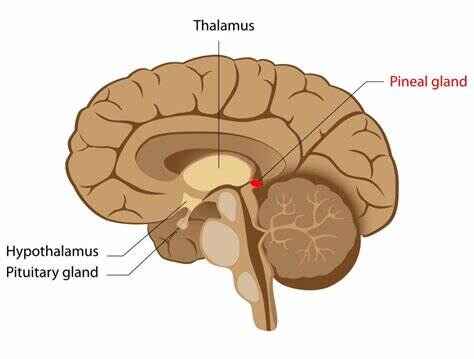
The pineal gland also known as the pineal body or epiphysis cerebri is a tiny gland in the brain that’s situated beneath the back part of the corpus callosum. It’s a part of your endocrine system & secretes the hormone melatonin. The pineal gland’s main function is to help control the circadian cycle of sleep & wakefulness by secreting melatonin.
it is shaped like a tiny pinecone. However, it is pronounced, “pin-ee-Uhl.”
What is melatonin?
It is a hormone that’s mainly produced by the pineal gland. The importance of pineal melatonin in humans is not evident, but many researchers believe it may help to synchronize circadian rhythms in different regions of the body. Circadian rhythms are physical, mental & behavioral changes that follow a 24-hour cycle of the body.
The pineal gland secretes the highest levels of melatonin when there’s darkness & decreases melatonin production when you’re exposed to light. In other words, you have low levels of melatonin in your blood during the daylight hours & peak levels of melatonin during the night. this also interacts with biological female hormones. Research has shown that it helps in the regulation of the menstrual cycles in females. it can also protect against neurodegeneration, that is the progressive loss of function of neurons. Neurodegeneration is present in conditions such as Alzheimer’s disease & Parkinson’s disease.
Function
The main function of the pineal gland is to receive information about the daily light-dark (day-night) cycle from the retinas in the eyes & then produce and secrete melatonin accordingly — elevated levels at night (during dark hours) & low levels during the day (during light hours).
In rare cases, a person with a pineal tumor may need surgical treatment to remove the pineal gland. This is called a pinealectomy.
Anatomy
This gland is located deep in the middle area of the brain. It lies in a groove just above the thalamus, which is an area of the brain that coordinates a variety of functions related to the senses.
The pineal gland consists of portions of neurons, neuroglial cells & specialized secreting cells known as pinealocytes. The pinealocytes create melatonin & secrete (release) it directly into the cerebrospinal fluid(CSF). This fluid flows in & around the hollow spaces of the brain & spinal cord, which then takes it into the bloodstream. This gland is tiny & has a cone-shaped gland that’s only about 0.8 cm long. it weighs about 0.1 gm in adults.
Conditions & Disorder
The pineal gland’s function & ability to secrete melatonin can be affected by the following conditions & situations:
- Pineal gland tumors.
- Injuries that affect the pineal gland.
- Pineal gland calcification.
Pineal gland tumors
These are very rare, & there are several different types of them. They’re more affect in children & adults younger than 40.
Pineal gland tumors are not always cancerous, but they still cause problems as they grow because they press against other parts of the brain. They can also block the normal flow of cerebrospinal fluid(CSF), which is the fluid that surrounds & cushions the brain. This blockage increases the pressure inside the skull, which is dangerous & requires treatment.
Injuries that affect the pineal gland
Damage to the pineal gland can lead to working improperly. Approximately 30% to 50% of people who experience a traumatic brain injury (TBI) have issues with at least one endocrine gland in their brain, which includes the pineal gland & pituitary gland.
A traumatic brain injury(TBI) can happen with a direct blow to the head. The injury can be penetrating, like a gunshot wound, or a non-penetrating injury, like being struck in the head during a car accident(RTA). Concussions are the common type of TBI.
Pineal gland calcification
Calcification happens when calcium builds up in the tissue, causing the tissue become harden.
The pineal gland tends to calcify as aging. While some calcification is normal, excessive calcification can prevent the pineal gland from functioning correctly. Some studies have revealed that the degree of calcification of the pineal gland is higher in those persons who are affected by Alzheimer’s disease. There’s a loose link between pineal gland calcification & some migraine & cluster headaches.
which are the symptoms of pineal gland problems?
- Seizures.
- Memory issues.
- Headaches.
- Nausea and vomiting.
- Vision changes.
Thyroid Gland
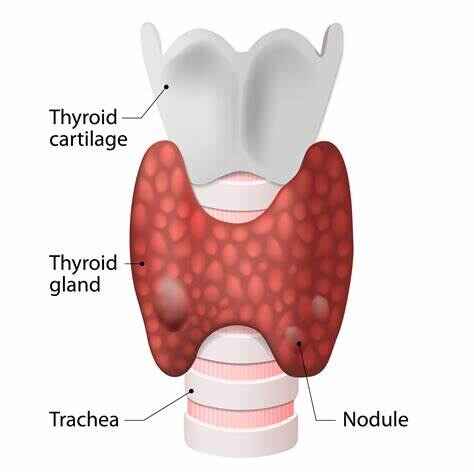
This gland lies in the front part of the neck. It’s important for metabolism.
The thyroid is a small, butterfly-shaped gland located at the front of the neck under the skin. It’s part of the endocrine system & controls many of the body’s important functions by producing & secreting certain hormones. the thyroid’s main job is to control the speed of the metabolism or metabolic rate, which is the process of how the body transforms the food consumed into energy.
Function
As an endocrine gland, the thyroid makes releases hormones. the thyroid produces & releases the following hormones:
Thyroxine (T4): This is the primary hormone produced & released by the thyroid gland. Although the thyroid makes the most of this hormone, it doesn’t have much of an effect on the metabolism. Once the thyroid releases thyroxine(T4) into the bloodstream, it can convert to T3 through a process known as deiodination.
Triiodothyronine (T3): The thyroid produces lesser amounts of T3 than T4, but it has a much greater effect on the metabolism than T4.
Reverse triiodothyronine (RT3): The thyroid makes very small amounts of RT3, which reverses the effects of triiodothyronine.
Calcitonin: This hormone helps regulate the amount of calcium in the blood.
The thyroid hormones affect the following bodily functions:
- How your body uses energy (metabolism).
- Heart rate.
- Breathing.
- Digestion.
- Body temperature.
- Brain development.
- Mental activity.
- Skin and bone maintenance.
- Fertility.
Anatomy
Which are the parts of the thyroid?
There are two main parts of the thyroid: the two halves (lobes) & the middle of the thyroid that connects the two lobes (thyroid isthmus).
The thyroid is made of thyroid follicle cells (thyrocytes), which create & store thyroid hormones (mainly T3 and T4), & C-cells, which secrete the calcitonin hormone.
How big is the thyroid?
The thyroid is about 2 inches long. A healthy thyroid usually does not stick out from the throat & it can’t see by looking at the neck.
However, certain conditions can cause the thyroid to become enlarged in size. This is called goiter. If you have a goiter, these symptoms may present including:
- Swelling is present in the front of the neck, just below Adam’s apple.
- A feeling of tightness is present in the throat area.
- A change in the voice, such as hoarseness of voice(scratchy voice).
Condition & disorder
There are some different types of thyroid disease. Thyroid diseases are divided into two types: primary & secondary.
Primary thyroid disease originates in the thyroid gland. Secondary thyroid disease develops in the pituitary gland.
For example, if a nodule in the thyroid secretes excess amounts of thyroid hormones, it would be known as primary hyperthyroidism. If a tumor in the pituitary gland releases excess amounts of thyroid-stimulating hormone (TSH), which then stimulates the thyroid to produce more thyroid hormones, it would be known as secondary hyperthyroidism.
The four main conditions that affect the thyroid include:
- Hypothyroidism (underactive thyroid).
- Hyperthyroidism (overactive thyroid).
- Goiter (enlarged thyroid).
- Thyroid cancer.
Hypothyroidism
Hypothyroidism (underactive thyroid) happens when the thyroid doesn’t produce & release enough thyroid hormones. This causes aspects of the metabolism to slow down. It is treatable by medical treatment.
Many causes of hypothyroidism include:
- Hashimoto’s disease is an autoimmune disease.
- Thyroiditis is the inflammation of the thyroid.
- Iodine deficiency.
- A nonfunctioning thyroid gland is when the thyroid doesn’t work correctly from birth.
- Over-treatment of hyperthyroidism through medication.
- Thyroid gland removal.
Hyperthyroidism:
Hyperthyroidism (overactive thyroid) happens when the thyroid produces & releases more thyroid hormones than the body needs. This causes aspects of the metabolism to speed up. It is treatable by medical treatment
Causes of hyperthyroidism include:
- Graves’ disease, is an autoimmune condition.
- Thyroid nodules.
- Thyroiditis is the inflammation of the thyroid.
- Postpartum thyroiditis is the inflammation of the thyroid that happens after giving birth.
- Excess iodine in the blood from diet or medication.
- A noncancerous tumor in the pituitary gland.
Goiter:
this disease is an abnormal enlargement of the thyroid gland.
Goiters have different causes, it depending on their type.
Simple goiters: These goiters develop when the thyroid gland doesn’t make enough hormones to meet the body’s needs.
Endemic goiters: it occurs in people who don’t get enough iodine in their diet.
Sporadic goiters: These goiters have idiopathic in most cases. In some cases, certain medications, such as lithium, can lead to sporadic goiters.
Thyroid cancer:
It is cancer that begins in the thyroid tissues. Approximately 53,000 people in the United States are diagnosed with thyroid cancer annually.
Thyroid cancer is divided based on the type of cells from which cancer grows.
Thyroid cancer types include:
Papillary: papillary thyroid cancer accounts for up to 80% of all thyroid cancer cases diagnoses.
Follicular: up to 15% of thyroid cancer cases are follicular.
Medullary: About 2% of thyroid cancer cases are medullary type. A gene mutation often causes it.
Anaplastic: About 2% of thyroid cancer cases are anaplastic type.
Parathyroid Gland
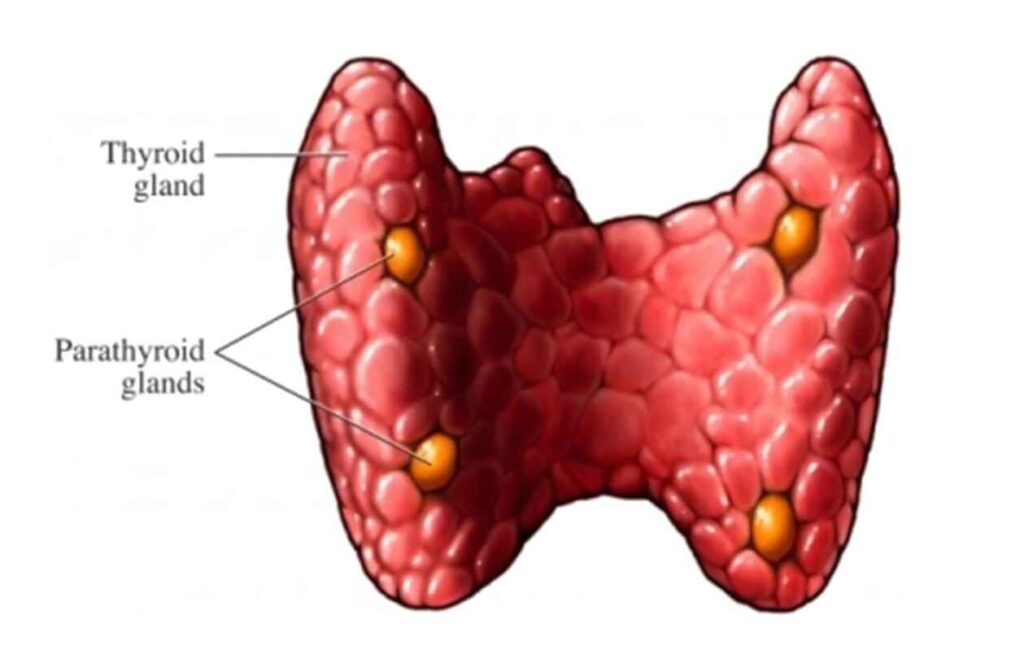
PTH is a hormone that the parathyroid glands make & release to control the level of calcium in the blood, not in bones. Calcium is the most important & common mineral in the human body. PTH also helps control the levels of phosphorus (a mineral) & vitamin D (a hormone) in the blood & bones.
What are parathyroid glands?
The parathyroid gland has four pea-sized & is situated behind the thyroid gland in the neck. Sometimes the parathyroid glands are located along the esophagus or in the chest called ectopic (in an abnormal place) parathyroid glands.
The main function of the parathyroid glands is to release parathyroid hormone (PTH). Sometimes, the parathyroid gland can release too little PTH, which results in low amounts of calcium in the blood (hypocalcemia), or too much PTH, resulting in high amounts of calcium in the blood (hypercalcemia).
What is calcium & what does it do?
The calcium in the blood has many important roles, including:
- Helping the nerves work.
- Helping to make the muscles squeeze together (contract) so the body can move.
- Helping the blood clot during bleeding.
- Helping the heart work properly.
How do vitamin D & phosphorus affect calcium levels in the blood?
Active vitamin D (calcitriol) helps to raise the amount of calcium the gut can absorb from the food & release it into the bloodstream. Active vitamin D also prevents calcium loss from the kidneys. In the body, vitamin D (calcitriol) is a hormone rather than a vitamin.
The skin mostly produces vitamin D from sun exposure. The liver & kidneys transform that vitamin D into the active hormone, which is known as calcitriol. Parathyroid hormone (PTH) raises the activity of the enzyme that produces an active form of vitamin D.
The amount of phosphorous in the blood affects the calcium level in the blood. In the body, calcium & phosphorous react in opposite ways: As the blood calcium levels rise, phosphate levels decrease — and vice versa. This gland lies in the front of your neck, the parathyroid gland is very important for maintaining control of calcium levels in your bones & blood.
Function
The parathyroid gland releases PTH when the body detects low calcium levels in the blood. The parathyroid hormone regulates calcium levels in the blood by affecting the following parts of the body:
Bones: PTH stimulates the release of little amounts of calcium from the bones into the bloodstream.
Kidneys: Parathyroid hormone enables the production of active vitamin D (calcitriol) in the kidneys. The parathyroid hormone also signals the kidneys to retain calcium in the body rather than flushing it out through the urine.
Small intestine: Parathyroid hormone signals the small intestine to absorb more calcium from the food.
Thymus Gland
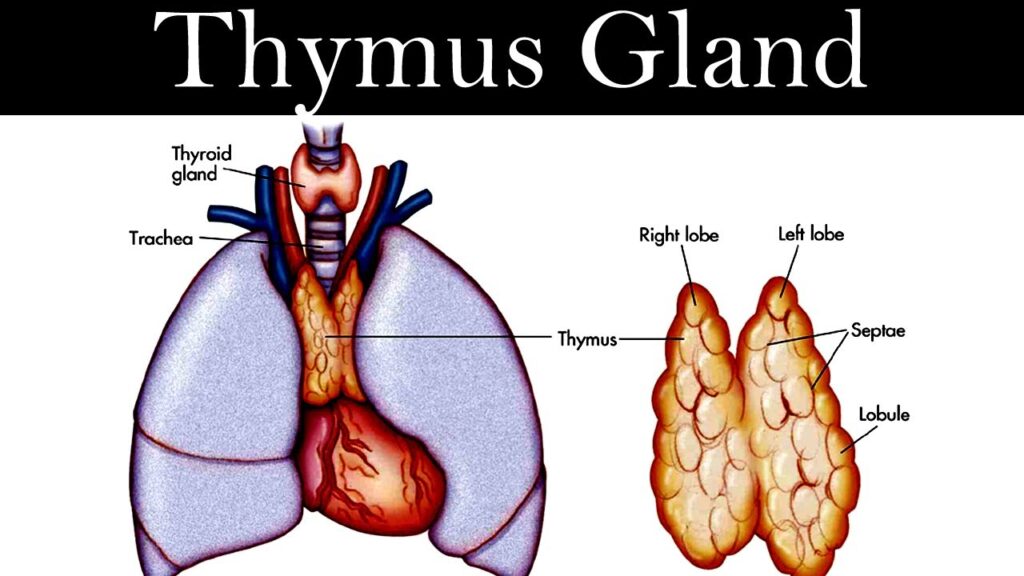
This gland lies in the upper torso, the thymus is active until puberty & produces hormones that are important for the development of a type of white blood cell known as a T cell.
It is a small gland in the lymphatic system that makes & trains special white blood cells(WBC) called T-cells. The T-cells help to immune system fight disease & infection. the thymus gland produces most of the T-cells before birth. the lymphatic system comprises a network of tissues, vessels & organs such as your tonsils, spleen & appendix
Function
The major function of the thymus gland is to train special white blood cells known as T-lymphocytes or T-cells. White blood cells (lymphocytes) travel from the bone marrow to the thymus gland. The lymphocytes mature & become specialized T-cells in the thymus & matured T cells, they enter the bloodstream. They travel to the lymph nodes (groups of cells) & other organs in the lymphatic system, where they help the immune system fight disease & infection.
The thymus gland is also part of your endocrine system. the endocrine system makes & releases hormones that control the functions of the body. the thymus produces & secrets several hormones including:
Thymopoietin: fuels the production of T-cells & tells the pituitary gland to secrete hormones.
Thymosin & thymulin: it helps make specialized types of T-cells.
Thymic humoral factor: keeps the immune system working properly.
Anatomy
The location of the thymus gland is in the upper chest behind the sternum. It sits between the lungs in a part of the chest known as the mediastinum. the thymus is just in front of & above the heart. The thymus gland is pinkish-gray in color. this gland is made up of two irregular parts (lobes). The lobes have lots of small bumps known as lobules on the surface.
Condition & Disorder
Many conditions & disorders can affect the thymus.
DiGeorge syndrome: this is a congenital (present at birth) disorder in which the thymus gland is missing or underdeveloped. Children born with DiGeorge syndrome have severe immunodeficiency (failure of the immune system)& are at a higher chance of infections.
Mediastinal masses: Masses can include tumors, fluid-filled sacs (cysts), or other abnormalities in the mediastinal organs, which include the thymus gland.
Thymoma & thymic carcinoma (thymus cancer): Thymoma & thymic carcinoma are two rare types of cancer that can form in the cells covering the outside surface of the thymus glands. Thymomas look like regular thymus cells, grow slowly & don’t usually spread beyond the thymus gland. Thymic carcinoma doesn’t look like regularly shaped thymus cells, grows faster & spread more frequently to other parts of the body.
Myasthenia gravis: this is an autoimmune disease in which the immune system forms antibodies that prevent the nerves from passing signals to the muscles, causing muscle weakness.
Pure red cell aplasia: A rare autoimmune disorder in which the body can’t produce new red blood cells(RBC), leading to severe anemia.
Hypogammaglobulinemia: A disorder in which the body produces low levels of antibodies.
Which are the symptoms of thymus cancer?
The most common signs of thymus gland cancer include:
- Thymus pain (pain in your upper chest).
- Persistent cough.
- Shortness of breath.
- Hoarse voice.
- Swelling is present in the face, neck, upper chest, or arms.
Adrenal Gland
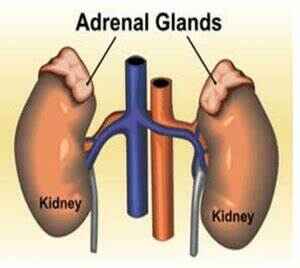
One adrenal gland can be located on top of each kidney. These glands produce hormones that are important for regulating functions such as blood pressure, heart rate, & stress response. the adrenal glands also called suprarenal glands. the adrenal glands are small, triangle-shaped glands that are situated on top of each of the two kidneys. They’re a part of the endocrine system & produce certain hormones that help regulate several important bodily functions, including:
- Metabolism (how the body transforms & manages the energy from the food you eat).
- Immune system.
- Blood pressure.
- Response to stress.
- Development of sexual characteristics.
The adrenal glands are composed of two parts: the cortex (outer region) & the medulla (inner part). Each part of the adrenal gland is responsible for producing different hormones.
Anatomy
There are two adrenal glands in the body that are located on top of each of the kidneys. the kidneys are lies underneath the ribcage on each side of the spine.
What are the parts of the adrenal glands?
Both adrenal glands consist of two main parts:
Medulla: it is the inner part of the adrenal gland & it secretes the hormones adrenaline (epinephrine) & noradrenaline (norepinephrine). These hormones help control blood pressure, heart rate, sweating & other activities that are also regulated by the sympathetic nervous system.
Cortex: It is the outer part of the adrenal gland, & it releases corticosteroid & mineralocorticoid hormones. It also stimulates the production of little amounts of male sex steroid hormones (androgenic steroids).
Conditions & Disorder
There are different common adrenal gland disorders. Some Causes of adrenal gland disorders include:
- Genetic mutations (changes).
- Autoimmune diseases.
- Tumors such as pheochromocytomas.
- Damage to the adrenal glands through injury, infection & blood loss.
- An issue with the hypothalamus or pituitary gland is that both help regulates the adrenal glands.
The adrenal gland conditions include:
Addison’s disease (primary adrenal insufficiency): Addison’s disease is a rare autoimmune disease that causes the adrenal glands to produce lower-than-normal levels of cortisol & aldosterone.
Cushing’s syndrome: This condition happens when the adrenal glands produce too much cortisol. It’s usually caused by a tumor in the gland or certain medications.
Congenital adrenal hyperplasia: it is a congenital condition where the body lacks an enzyme that the adrenal glands need to make hormones.
Excessive hair growth (hirsutism): This happens when women & people assigned female at birth (AFAB) develop excessive hair growth due to high levels of androgen, which the adrenal glands make.
Primary aldosteronism (Conn’s syndrome) happens when the adrenal glands produce too much aldosterone.
Massive bilateral adrenal hemorrhage (Waterhouse-Friderichsen syndrome): This condition is acute that leads to adrenal gland failure due to bleeding into the gland. It’s usually associated with a severe infection known as sepsis.
What are the early warning signs & symptoms of adrenal gland problems?
The symptoms depend on which hormones are affected. Signs & symptoms that are relevant to the bodily processes the adrenal gland hormones affect include:
Metabolism symptoms: Unexplained weight gain or weight loss, fatigue high sugar level blood or low sugar level in the blood, and weakness.
Immune system symptoms: Frequent sickness or infections.
Blood pressure symptoms: may High blood pressure (hypertension) or low blood pressure (hypotension).
Sexual characteristics and symptoms that affect females & prepubescent males: Growing facial hair and or balding, developing acne, having a deeper voice & becoming more muscular.
Pancreas Gland
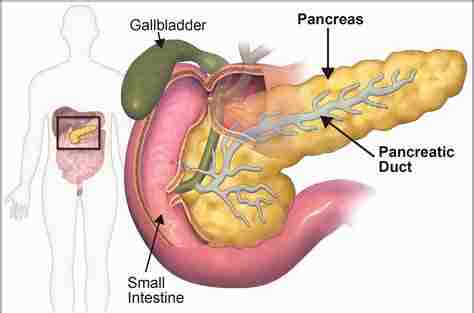
The pancreas is situated in your abdomen behind the stomach. Its controls blood sugar levels. Some endocrine glands also have non-endocrine functions. For example, the ovaries & testes glands produce hormones, but they also have the non-endocrine function of producing eggs & sperm, respectively. It is an organ in the back of the abdomen (belly). The pancreas is an organ & gland. Glands produce & release substances in the body. The pancreas has two main functions such as:
Exocrine function: Produces substances (enzymes) that help in digestion
Endocrine function: Sends out hormones that control the sugar level in the bloodstream.
What is the exocrine system?
This consists of glands that make substances that travel via a duct (tube) & the exocrine system includes:
- Lacrimal glands (tear glands).
- Mammary glands.
- Mucous membranes.
- Prostate.
- Salivary glands.
- Sebaceous (oil) glands.
- Sweat glands.
What is the endocrine system?
This consists of glands that release hormones into the blood. These glands control many body functions.
the endocrine system includes the:
- Adrenal glands.
- Hypothalamus.
- Ovaries and testes.
- Parathyroid and thyroid gland.
- Pineal gland.
- Pituitary gland.
- Thymus.
Function
What does the pancreas do?
An exocrine gland runs the length of the pancreas. It produces many enzymes that help in metabolism. the pancreas secretes the following enzymes:
What does the pancreas do?
An exocrine gland runs the length of the pancreas. It produces many enzymes that help in the breakdown of food. the pancreas releases the following enzymes:
Lipase: lipase works with bile (a fluid produced by the liver) to break down fats.
Amylase: it helps in breaking down carbohydrates for energy.
Protease: it breaks down proteins.
When food enters the stomach:
The pancreas releases the pancreatic enzymes into small ducts that flow into the main pancreatic duct of the pancreas. the main pancreatic duct connects with the bile duct and then transports bile from the liver to the gallbladder. From the gallbladder, the bile travels to part of the small intestine known as the duodenum. Both the bile & the pancreatic enzymes enter the duodenum to break down food.
Anatomy
Where is the pancreas located?
the pancreas lies behind the stomach & in front of the spine. The right side body contains the head of the pancreas. This narrow organ lies along the first segment of the small intestine, known as the duodenum. The left side of the body contains the tail of the pancreas. This is about 6 inches long. It’s about the length of the hand of the human.
Which are the parts of the pancreas?
The pancreas anatomy includes:
Head: The wider part of the pancreas that lies in the curve of the duodenum.
Neck: it extends from the head to the body.
Body: the body is the middle part of the pancreas between the head & neck, which extends upward.Tail: The thinnest part of the pancreas, situated near the spleen.
Conditions & Disorders
The following disorders can affect the pancreas gland:
Type 1 diabetes: It occurs when the pancreas doesn’t produce insulin.
Type 2 diabetes: It occurs when the body makes insulin but doesn’t use it correctly.
Hypoglycemia: It occurs when the body produces too much insulin. It causes low blood sugar levels in the blood.
Pancreatitis: It happens when enzymes start to work in the pancreas before they reach the duodenum. It may result from gallstones or excessive alcohol consumption.
Pancreatic cancer: Cancerous cells in the pancreas leads to pancreatic cancer.
which conditions can affect the endocrine system?
Sometimes, hormone levels can be too high or too low in the body.
Hyperthyroidism
It happens when your thyroid gland secretes more thyroid hormone than necessary. This can be caused by autoimmune conditions. Some most common symptoms of hyperthyroidism include the:
- fatigue
- nervousness
- weight loss
- diarrhea
- issues tolerating heat
- fast heart rate
- trouble sleeping
Treatment depends on how severe the condition is, also its underlying cause. include medications, radioiodine therapy, or surgery.
Graves‘ disease is an autoimmune condition & a common form of hyperthyroidism. In people with Graves‘ disease, the immune system attacks the thyroid gland, which causes it to produce more thyroid hormone than necessary.
Hypothyroidism
It occurs when your thyroid glands don’t produce enough thyroid hormone. Some common symptoms of hypothyroidism include:
- fatigue
- weight gain
- constipation
- issues tolerating the cold
- dry skin and hair
- slow heart rate
- irregular periods
- fertility issues
Treatment for hypothyroidism is supplementing thyroid hormone with medication.
Cushing syndrome
It happens due to high levels of cortisol hormone. The symptoms of Cushing syndrome include:
- weight gain
- fatty deposits in the face, midsection, or shoulder area.
- stretch marks, particularly on the arms, thighs, & abdomen region
- slow healing of cuts, scrapes, & any insect bites
- thin skin ( bruises easily)
- irregular periods
- decreased sex drive & fertility in males
Treatment depends on the cause & severity of the condition & can include medications, radiation therapy, or surgery.
Addison’s disease
It happens when your adrenals don’t produce enough cortisol or aldosterone. Some symptoms of this disease include:
- fatigue
- weight loss
- abdominal pain
- low blood sugar
- nausea or vomiting
- diarrhea
- irritability
- a craving for salt or salty foods
- irregular periods
Treatment for this disease involves taking medications that help replace the hormones your body isn’t producing enough.
Diabetes
This condition is in which your blood sugar levels aren’t regulated within a certain range. People with diabetes have high glucose levels in their blood (high blood sugar). There are two types of diabetes:
type 1 diabetes
type 2 diabetes.
Some common symptoms of this disease include:
- fatigue
- increased hunger or thirst
- frequent urge to urinate
- irritability
- frequent infections
Diabetes treatment can include blood sugar regulation, insulin therapy, & medications. Lifestyle changes, such as getting regular exercise & eating a balanced diet, can also help.
Polycystic ovary syndrome (PCOS)
Unbalanced reproductive hormones cause this condition in people with ovaries, which can create issues in the ovaries in females. Living with Polycystic ovary syndrome means that an egg may not be released every month, or may not develop as it should when it is released. Some of the common symptoms of Polycystic ovary syndrome are:
- irregular periods
- fertility issues
- cysts that form at the ovaries
- acne
- hirsutism: which is an unnecessary amount of hair growth on the face or chin
- thinning hair
- weight gain
- skin tags
Treatment for Polycystic ovary syndrome includes medications, like birth control & metformin, and lifestyle changes, such as more focusing on nutrition & trying to reach a moderate weight if your doctor has recommended it.
Hypogonadism
This is a common condition, especially in older males & occasionally in females, hypogonadism is caused by a reduction in the production of the sex hormone testosterone. This can cause lowered libido, as well as a variety of other symptoms, such as:
- erectile dysfunction in males
- reduced energy
- reduced muscle mass
- depressed mood
- increased irritability
Treatment for hypogonadism focuses mainly on improved testosterone levels. Testosterone replacement therapy & lifestyle changes (such as working toward a moderate weight if your doctor has recommended it) are two popular methods.
Osteoporosis
Osteoporosis is an abnormal loss of bone mass & changes in bone tissue. It can be caused by a variety of issues, but two common causes are decreased estrogen levels in people with ovaries & decreased testosterone levels in people with testicles. These decreased hormone levels can be caused by age, as well as other diseases. this condition doesn‘t always cause obvious symptoms. But some of the most common symptoms are bone fractures & injuries related to minor falls, lifting, and even coughing. Treatment for this condition focuses on slowing or stopping bone loss. Proper nutrition, exercise, & medications are three of the most common treatments.
Acromegaly
This rare condition is caused when the body makes too much growth hormone, which is mainly produced in the pituitary gland. Primarily diagnosed in middle-aged adults, it can cause organs, bones, cartilage, organs, & certain tissues to grow in size. The common symptoms of acromegaly include:
- swollen nose
- swollen ears
- swollen hands and feet
- joint aches
- a deeper voice than usual
- an increase in sweating & body odor
Treatment for acromegaly includes medications, radiation therapy, & surgery.
What is the role of endocrine hormones?
Hormones of the endocrine glands regulate mood regulation, development & growth, metabolism, mechanism of action of organs & much more. it is to check how hormones are secreted, which depends on the level of hormones produced & other substances present in the blood.
What is the role of the pancreas in digestion?
The pancreas plays a major role in digestion. It is located inside the abdomen, just behind the stomach. It’s about the size of the hand. During digestion, the pancreas makes pancreatic juices known as enzymes. These enzymes break down sugars, fats, & starches molecules. the pancreas also helps in the digestive system by making hormones
What is the role of the pineal gland in sleep?
The pineal gland secretes melatonin hormone, which helps in regulating circadian rhythms. The pineal gland releases more amounts of melatonin when it is dark, which points to melatonin’s role in sleep.
What hormone is secreted by the thyroid gland?
The thyroid secretes several hormones. The main hormone is Thyroxine (T4). these hormones act throughout the body, influencing metabolism, growth development, & body temperature. During infancy & childhood, adequate thyroid hormone is crucial for the development of the brain.
How does the pituitary gland regulate hormone activity?
The pituitary gland help to regulate hormonal activity in other endocrine glands & organs. it is regulated by hormones of the hypothalamus, a brain region connected to the pituitary by the pituitary stalk. The pituitary is composed of an anterior & posterior lobe with an intermediate region between the two.

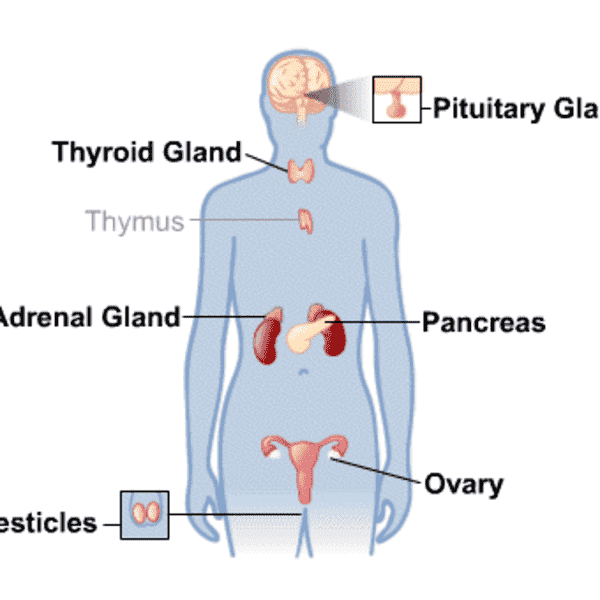
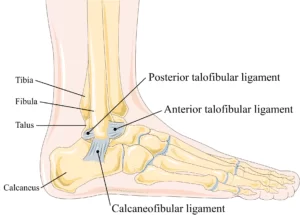
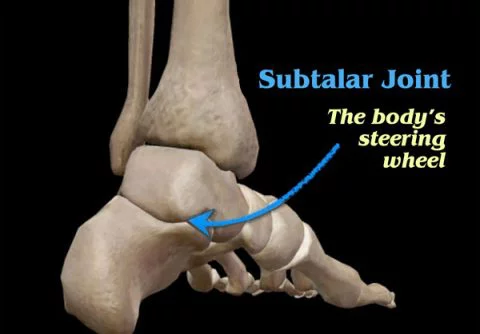
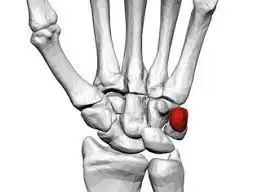
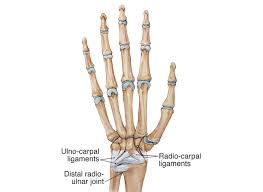
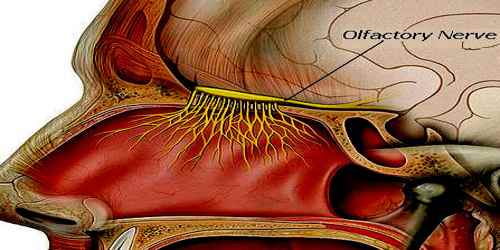
One Comment